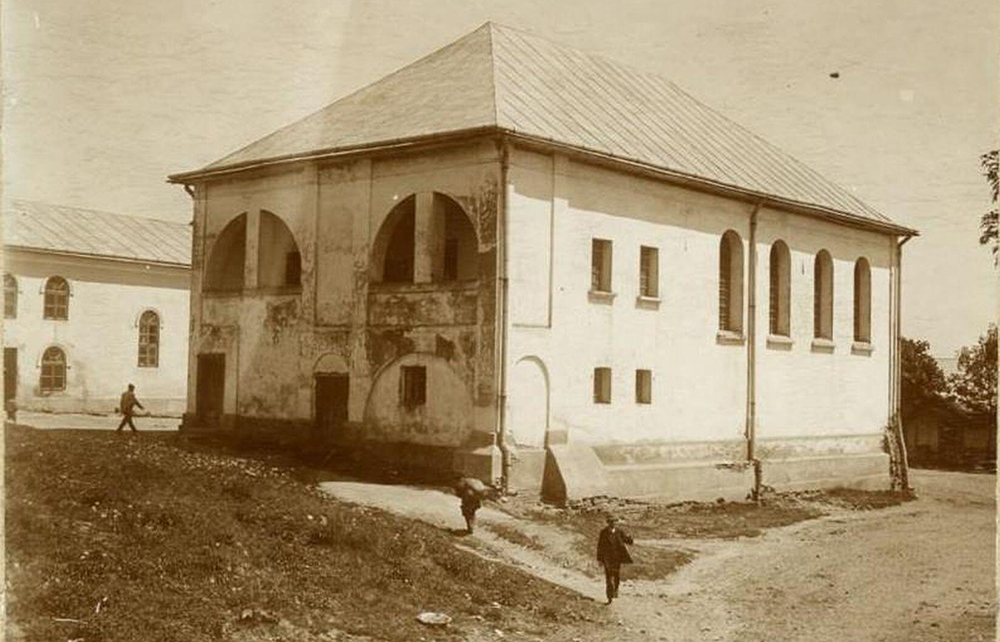The historian Bernard Wasserstein is admired as a rigorous academic. In his monumental work on the Holocaust and his perceptive study of barbarism vs civilisation in the West, he strove for objectivity and maintained a professorial tone, as if writing of the past from an Olympian height.
Wasserstein’s grandparents and aunt were forced to dig their own graves, and were then shot
Not so in this extraordinarily moving book about Krakowiec, the shtetl 40 miles from Lviv where his forebears lived for generations, and the role his family played there. At various times part of Austria, Poland, Ukraine, Germany and Soviet Russia, it was, he says, ‘a small place you’ve never heard of’. Yet its complex history is relevant today, as war returns to Eastern Europe.
Wasserstein’s grandparents, whom he never knew, lived and died in Krakowiec. Their fates were hardly ever mentioned while he was growing up in provincial England with his refugee parents – or, if they were, only in hushed tones. Now 75, he did not set foot in the town until his mid-forties; ‘yet throughout my youth I dreamt of this almost unmentionable, and therefore all the more mysterious, ancestral hearth.’
Though he has been thinking about the story and researching it for decades, the writing feels immediate. The book is part memoir, part history lesson about ‘old Europe’ as a battleground between four empires, and part lament for the lost world of European Jewry. Perhaps the most valuable thing about it for British readers is its reminder of how lucky we are to have welcomed refugees to our shores and not to have exported them. Wasserstein has a deep understanding of places where borders have violently changed every couple of generations and whole populations have been massacred as a result of ideology, religion or whim.
Krakowiec is in the far west of Ukraine, near the border with Poland. For decades after the second world war it was a sleepy place where nothing much happened. Now it is ‘again in the storm of history… a kissing point, a border post where families are united and divided’. Troops are stationed there, aid agencies are established, and western journalists visit. It is once again a station point in a war zone.
Wasserstein traces its story over 1,000 years. It had some glory days under the Poles in the 16th century; and later, for a century and a half when it was part of the Habsburg province of Galicia, there was a beautiful baroque palace, famous throughout the Austrian empire. Its Jewish population would increase significantly with refugees from the pogroms common in Tsarist Russia, and from persecution by rival Polish and Ukrainian nationalists. Between 1914 and 1945, wars and revolutions changed the borders in Galicia six times, and it is difficult even for those familiar with the region’s history to follow the exact chronology of occupation and reoccupation. But one thing was a constant in those years: everyone blamed the Jews.
Wasserstein describes in harrowing detail the slaughter of the Jews in Galicia after the German invasion of the USSR, and the deaths of his grandfather Berl, his grandmother Czarna and his aunt Lotte. When, in December 1942, the 450 Jews of Krakowiec were rounded up and sent to the ghetto in the nearby town of Jaworow, these three managed to escape. Extraordinarily, with the help of a young Ukrainian engineer, they remained hidden in a forest – until they were betrayed to the Nazis in April 1944. They were then forced to dig their own graves by the edge of a lake, and shot. The betrayer turned out to be the man who had sheltered them for more than a year. After 1945, according to Soviet records, just one Jew survived in Krakowiec.
Wasserstein does not shy away from difficult facts in the current climate. The betrayer was one of thousands who supported the ultra-nationalist Ukrainian Insurgent Army, the UPA, a group which allied itself with the Nazis against the Soviets, and whose members were willing accomplices in the Holocaust. Scores of monuments have recently gone up to its ‘heroes’ in towns throughout Ukraine. They include one in the main square in Krakowiec – to Roman Shukhevych, a UPA leader whose battle cry was to make Ukraine ‘Jew-free’.
Honouring sadists from the past has nothing specifically to do with Ukraine today. But as a historian, Wasserstein takes a concerned view; and as an individual who supports Ukrainian freedom, he feels deeply insulted:
Collective identities based on falsification of history are inherently contaminated and potentially dangerous. I struggled to contain my feelings as I contemplated the effigy of the war criminal towering over the square where my family had lived for generations – and from which the Jews of the town were transported to their deaths.






Comments